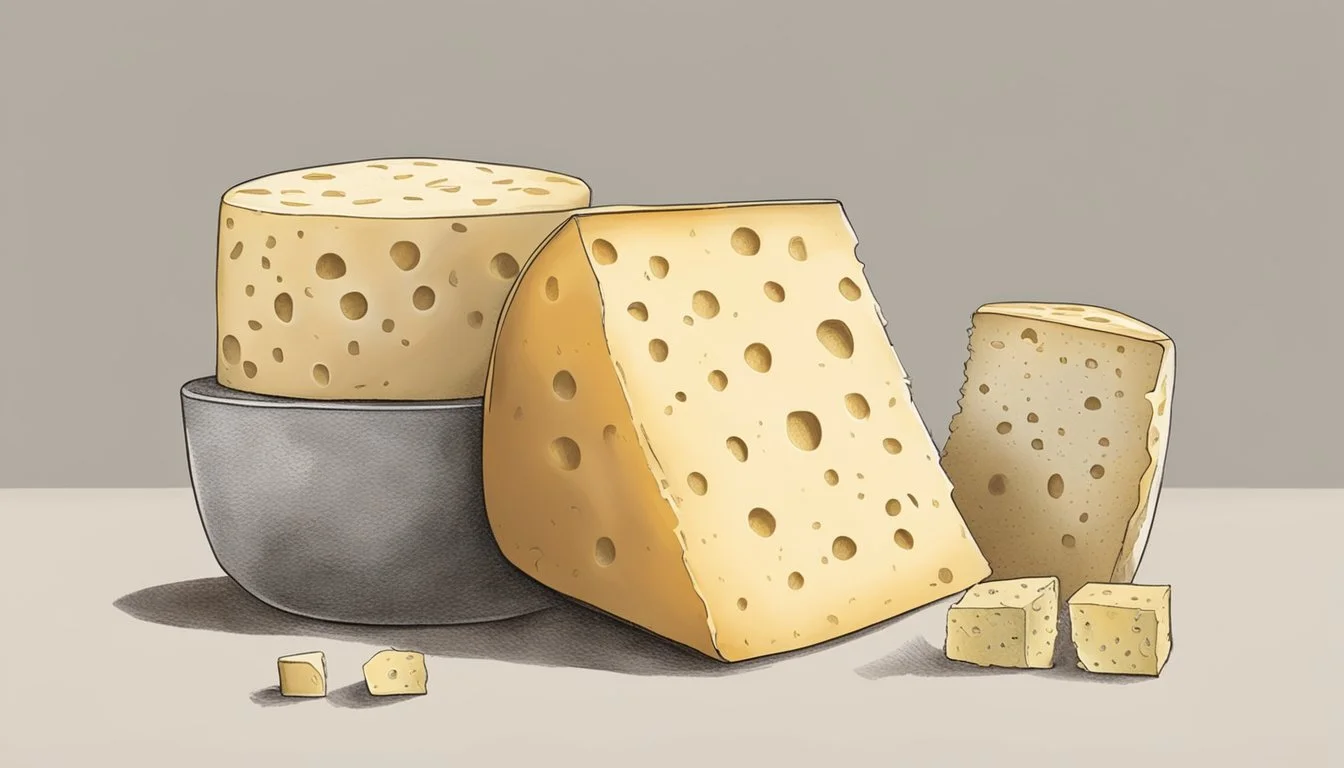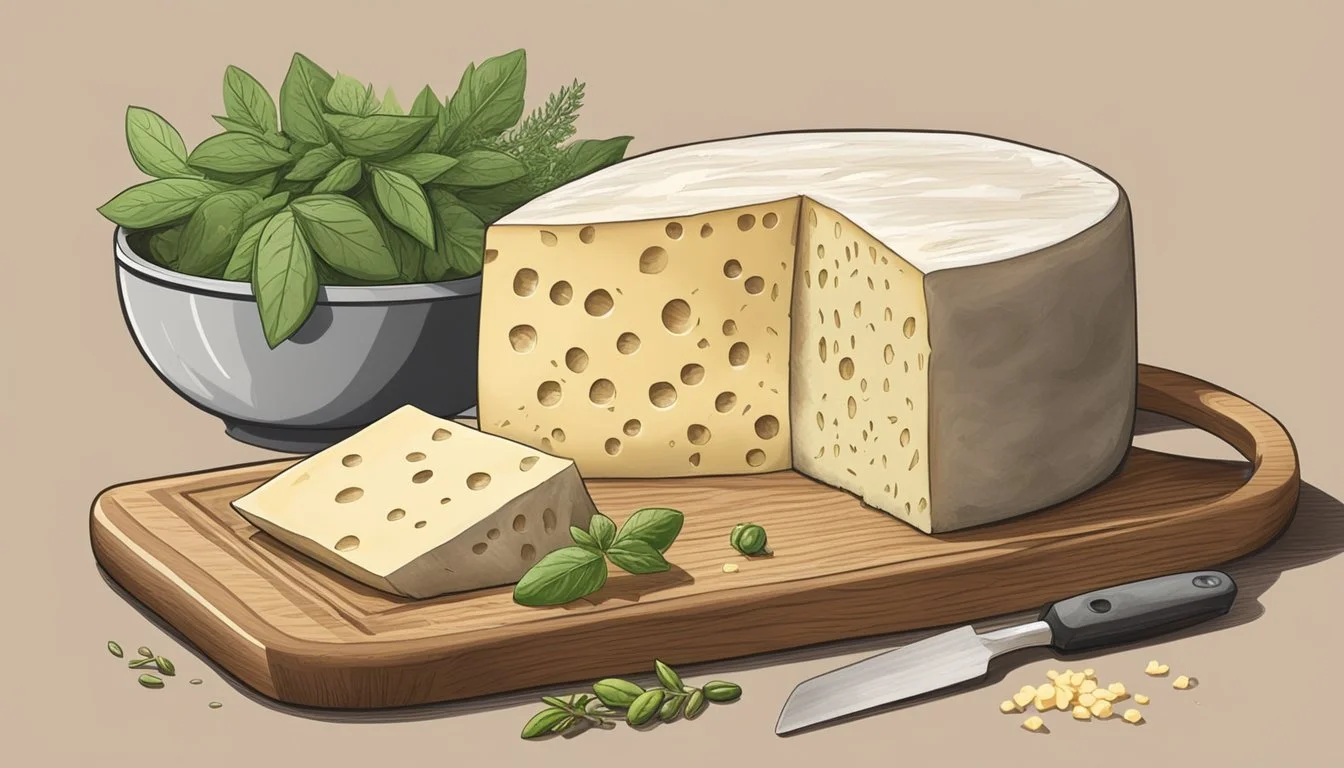How Long Does Pecorino Romano Cheese Last?
Understanding Its Shelf Life
Pecorino Romano, a hard Italian cheese (how long does cheese last?)made from sheep's milk, is renowned for both its sharp flavor and its remarkable longevity in storage compared to softer cheeses (What wine goes well with cheese?). As a product with deep roots in the pastoral traditions of Italy, this cheese is not only a culinary staple but also a testament to the art of cheese preservation. Its high salt content serves as a natural preservative, inhibiting bacterial growth and allowing it to last longer than many cheese varieties.
When properly stored in a refrigerator at temperatures below 40°F (4°C), an unopened wheel of Pecorino Romano can maintain its quality for up to three to four months. Once opened, the cheese still boasts a considerable shelf life, ranging from several weeks to a couple of months, depending on storage conditions. Wrapping Pecorino Romano in parchment paper and placing it in the cheese drawer or the vegetable crisper can help to ensure optimal freshness.
It is important to note that the intense flavor of Pecorino Romano may further develop with time, even when correctly stored. For those who prefer to maintain a milder taste, freezing the cheese is a viable option, extending its edibility up to six months. However, it's crucial to remember that freezing can alter the texture, so one should weigh the trade-off between longevity and texture before deciding to freeze this traditional Italian cheese.
Understanding Pecorino Romano
Pecorino Romano is a well-respected variety of cheese recognized for its bold flavor profile and rich history. Originating from Italy, specifically the Lazio region and the island of Sardinia, it is a product of meticulous cheesemaking techniques passed down through generations.
Characteristics:
Texture: It is firm and dense, with a crystalline structure developing as it ages.
Flavor: The cheese is known for its sharp, tangy, and somewhat salty taste.
Aging: On average, Pecorino Romano is aged for a minimum of eight months, contributing to its dry, crumbly texture and intense flavor.
Composition and Health Benefits:
Rennet: Traditional methods use lamb rennet, contributing to its unique flavor.
Protein and Calcium: Pecorino Romano is rich in both protein and calcium, providing health benefits like bone strength and muscle repair.
Storage and Longevity:
Fridge Storage: In the refrigerator, it can last approximately one to four months.
Freezer Storage (if applicable): Freezing may extend its life up to six months, though it can alter texture and flavor.
Crafted with strict adherence to original production codes, Pecorino Romano distinguishes itself not only by its geographical origin but also through its cultural and culinary significance. Its presence can elevate a dish, enriching it with a touch of Italian tradition and robust taste.
Shelf Life Fundamentals
Pecorino Romano cheese varies in shelf life depending on whether it's opened or unopened, with factors like storage conditions and the aging process playing crucial roles.
Unopened Pecorino Romano
Unopened Pecorino Romano, when stored properly in the fridge, typically lasts for three to four months. This longevity is due to the dense and hard texture characteristic of this aged cheese. Manufacturers often label the cheese with a "best by" date, which can be a useful guide for determining its peak quality.
Opened Pecorino Romano
Once opened, Pecorino Romano should be consumed within a shorter time frame. The remaining shelf life can generally range from a couple of weeks to two months when stored under optimal conditions in the refrigerator. The key to maximizing its shelf life post-opening is ensuring the cheese is wrapped tightly and kept at temperatures below 40°F (4°C). Unlike Pecorino Romano, Parmigiano-Reggiano is a similar cheese that might be referenced for comparison, but their shelf lives can differ due to variances in their aging process and salt content.
Proper Storage Techniques
The longevity of Pecorino Romano cheese greatly depends on effective storage methods. Adhering to the proper techniques ensures the cheese maintains its quality and taste.
Refrigeration
Refrigerator Storage: Pecorino Romano should be stored in the refrigerator, ideally within the cheese drawer or vegetable crisper where temperatures and humidity levels are more constant. Wrapping the cheese tightly in parchment paper, wax paper, or butcher paper is vital to allow the cheese to breathe while limiting moisture loss, after which it should be placed in an airtight container to protect it from additional odors or flavors.
Packaging: If the original packaging is still intact and unopened, it can be used in the fridge. Once opened, rewrap the cheese as described.
Duration:
Opened: 2-3 weeks
Unopened: 3-4 months
Freezing
Freezing Pecorino Romano:
Preparation: Wrap the Pecorino Romano in paper, followed by a layer of aluminum foil or place it in a freezer bag to prevent freezer burn and odor absorption.
Thawing: For optimal texture and flavor, thaw frozen Pecorino Romano in the refrigerator slowly.
Time Frame: Properly packaged, Pecorino Romano can be stored in the freezer for up to six months.
Room Temperature and Pantry
Pantry Storage: Storing Pecorino Romano at room temperature is generally not recommended, especially for extended periods, due to the risk of spoilage and bacterial growth. However, if room temperature storage is necessary for a short time, the cheese should be kept in a cool, dark place like a pantry and away from direct sunlight with ideal temperatures ranging from 50°F to 60°F (10°C to 15.5°C). Even in proper conditions, it should not be left out for more than two hours.
Air Circulation: Ensure that air can circulate around the cheese to prevent moisture buildup.
Monitoring: Regular checks are important to detect any signs of mold or drying out.
Signs of Spoilage
When inspecting Pecorino Romano cheese for spoilage, one should pay close attention to visual cues and the condition relating to texture and smell. These indicators can help determine whether the cheese is still safe to consume or should be discarded.
Visual Cues
One can notice mold growth on Pecorino Romano as spots or layers that appear fuzzy and can range in color from white to greenish-black. Another visual indicator of spoilage is discoloration; any significant deviation from the cheese's natural pale yellow to white color suggesting spoilage. If either of these signs are present, it's safe to say that the cheese has gone bad and should not be consumed.
Texture and Smell
Spoiled Pecorino Romano may exhibit changes in texture, becoming either overly hard and crumbly beyond its typical firmness, or unusually soft and slimy which contrasts with its characteristic dense structure. Additionally, an off smell—an intense sour or ammonia-like odor distinct from the cheese's naturally sharp scent—can indicate spoilage. If these textural or olfactory signs are detected, the cheese should be discarded to avoid potential health risks.
Culinary Applications
Pecorino Romano cheese is renowned for its bold, salty flavor and grainy texture, making it a versatile ingredient in many dishes. Its robust nature allows it to be a standout feature in recipes or a complementary addition that enhances overall flavors.
Grating for Dishes
Incorporating Pecorino Romano into pasta dishes or atop pizzas elevates the meal with its sharp taste. One can grate it over classics like spaghetti carbonara or cacio e pepe, where the cheese blends smoothly with other ingredients to create a rich and satisfying sauce. Grating Pecorino Romano allows it to integrate well into the dishes, contributing a saltiness that pairs perfectly with the heartiness of traditional Italian sauces.
Cooking with Pecorino
Pecorino Romano lends itself beautifully to cooking, whether it's integrated into a lush parmigiana di melanzane or sprinkled over a quattro formaggi pizza. Chefs may use it in stews or soups to add depth or create a textural contrast when sprinkled on salads. Its melting characteristics make it an excellent choice for baked pasta or vegetable dishes, where it forms a delightful golden crust.
Cheese Boards and Pairings
For those who prefer to savor the unadulterated taste of Pecorino Romano, it makes a bold statement on a cheese board. Pair it with a variety of fruits and nuts for a balance of flavors and textures. It can be enjoyed with cured meats (What wine goes well with cured meats?), creating a delightful combination of tastes that cater to personal preference. The cheese's robust flavor allows it to stand alongside other strong varieties without being overshadowed.
Comparing Pecorino with Parmesan
Pecorino Romano and Parmesan, specifically Parmigiano-Reggiano, are stalwarts in the world of hard cheeses. Both bring a distinctive presence to dishes, such as the classic Parmigiana di Melanzane, adding layers of complexity with their bold flavors.
Pecorino Romano originates from sheep's milk, imbuing it with a characteristically bright and sharp saltiness. This cheese often presents an intense flavor profile that stands out in recipes. Its texture is slightly softer compared to Parmesan, yet still firm, making it less suitable for grating when extremely fresh.
Parmesan or Parmigiano-Reggiano cheese, made from cow's milk, showcases a more subtle complexity with a nutty flavor. Aged Parmesan can exhibit a slight hint of umami and even caramel, especially when super-aged. The cheese is known for its dry, hard texture, perfect for finely grating over dishes to enhance their taste without overpowering other ingredients.
Aspect Pecorino Romano Parmesan Milk Source Sheep Cow Texture Slightly softer Hard, dry Flavor Bright, sharp, grassy Nutty, umami, sometimes caramel Salt Content Higher Lower Best in Cacio e pepe, bold dishes Grated toppings, subtle flavor enhancement
While both cheeses are high in salt content, Pecorino Romano generally possesses a higher salt content, leading to its distinctly sharp taste. The meticulous aging processes contribute significantly to the depth and breadth of flavors experienced in both varieties of cheese. Chefs and home cooks alike may interchange these cheeses in recipes, but must adjust proportions and accompaniments to account for the variance in flavor and salt intensity.
Legal and Geographic Significance
Pecorino Romano is an Italian cheese with a Protected Designation of Origin (PDO) status under European Union law. This distinction ensures that only cheese produced in specific regions of Italy—namely Lazio, and parts of Sardinia and the Province of Grosseto—can bear the name 'Pecorino Romano'.
The cheese's legal protection ties it intimately to its geography. The PDO status mandates adherence to traditional production methods and maintains quality standards that have been associated with the region's heritage. Here's an overview of the related entities:
Protected Designation of Origin (PDO): Certification that safeguards the authenticity of traditional foods specific to regions and stipulates production methods.
Region: Recognized production areas for Pecorino Romano include Lazio, the central region of Italy, and some parts of Sardinia and Tuscany.
Lazio: This region is especially pivotal for the production of Pecorino Romano, as it is the cheese's namesake.
Sardinia: As a significant production locale, Sardinia brings distinctive characteristics to Pecorino Romano due to its environmental conditions.
It is these specific regions' unique climates and natural resources that impart Pecorino Romano with its particular flavors and textures, which cannot be replicated elsewhere. Consumers benefit from this legislation as it guarantees the purchase of a genuine product, historically linked to its area of origin. Producers are also protected from unfair competition from non-authentic products mimicking Pecorino Romano.
The PDO label serves as a testament to Pecorino Romano’s storied past and continued presence as an essential element of Italian, and particularly Lazio and Sardinian, culinary culture.







